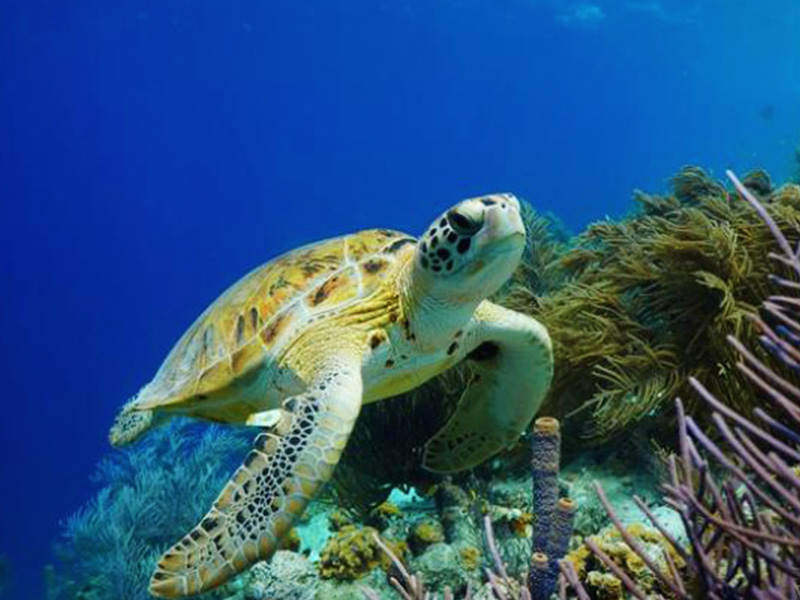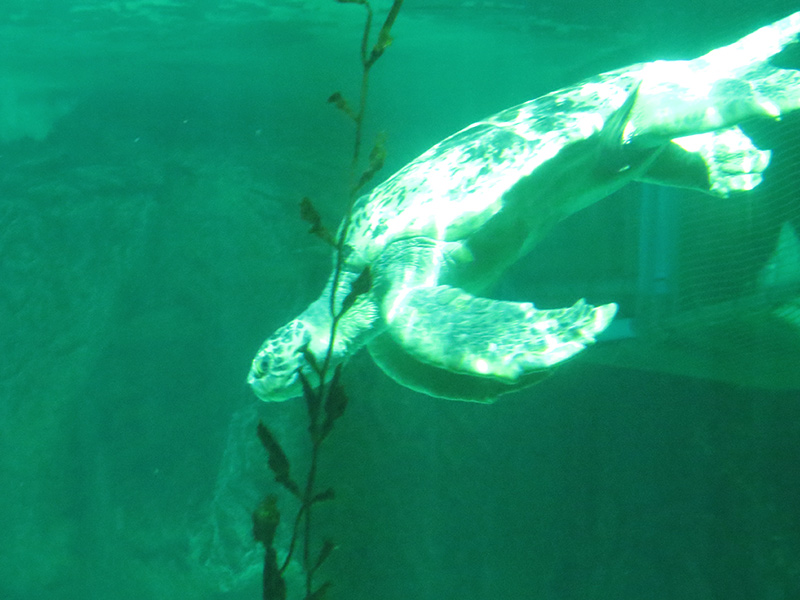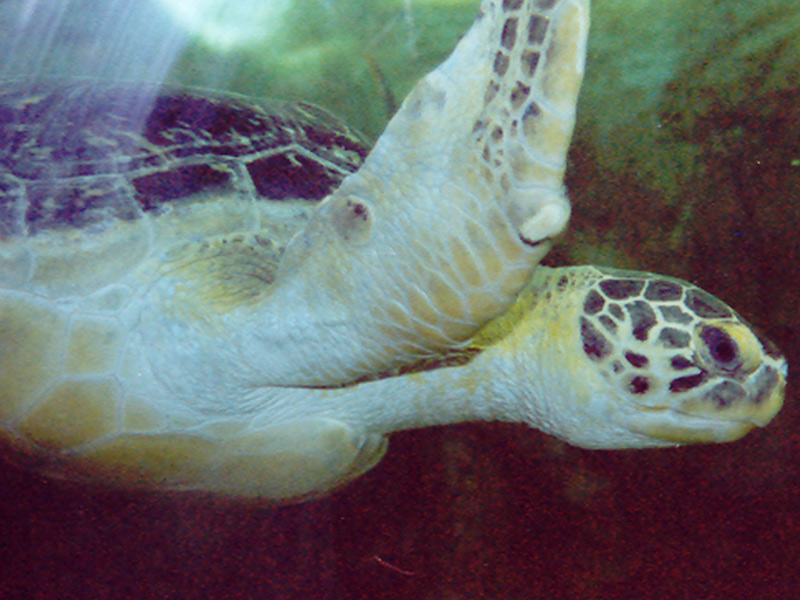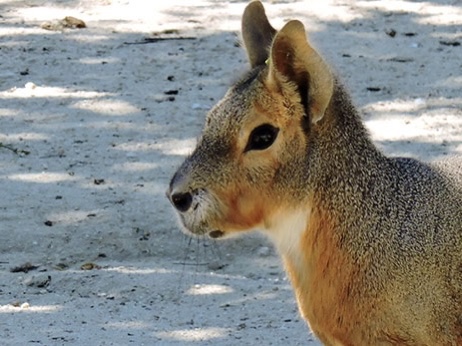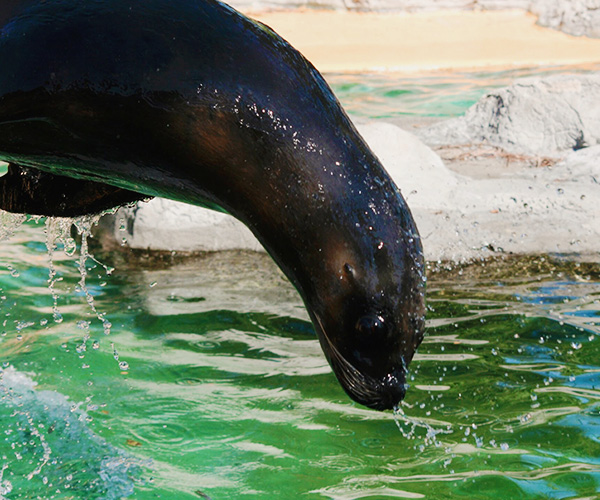The Green Turtle is the largest of the hard-shelled turtles and is distributed throughout the tropical and subtropical oceans worldwide. The fat under their shell is what gives them their green color. It has a flattened body, a head with a short neck and fins adapted for swimming. Its snout is very short, and its beak is not hooked, unlike its close relative, the hawksbill turtle. Their shell has color patterns that change over time: black for baby turtles, dark brown or olive green for young ones and completely brown for adult turtles.
Fundamentally herbivorous, its diet consists of a large amount of macroalgae (except in the case of juveniles, which mainly eat small crustaceans). It spends most of its life in shallow coastal waters that are rich in seagrass. Green turtles return to nesting beaches to lay between 100 and 200 eggs every two to four years. Gestation lasts between 45 and 70 days. Mating seasons vary among the different populations, while life expectancy can reach 75 years.
